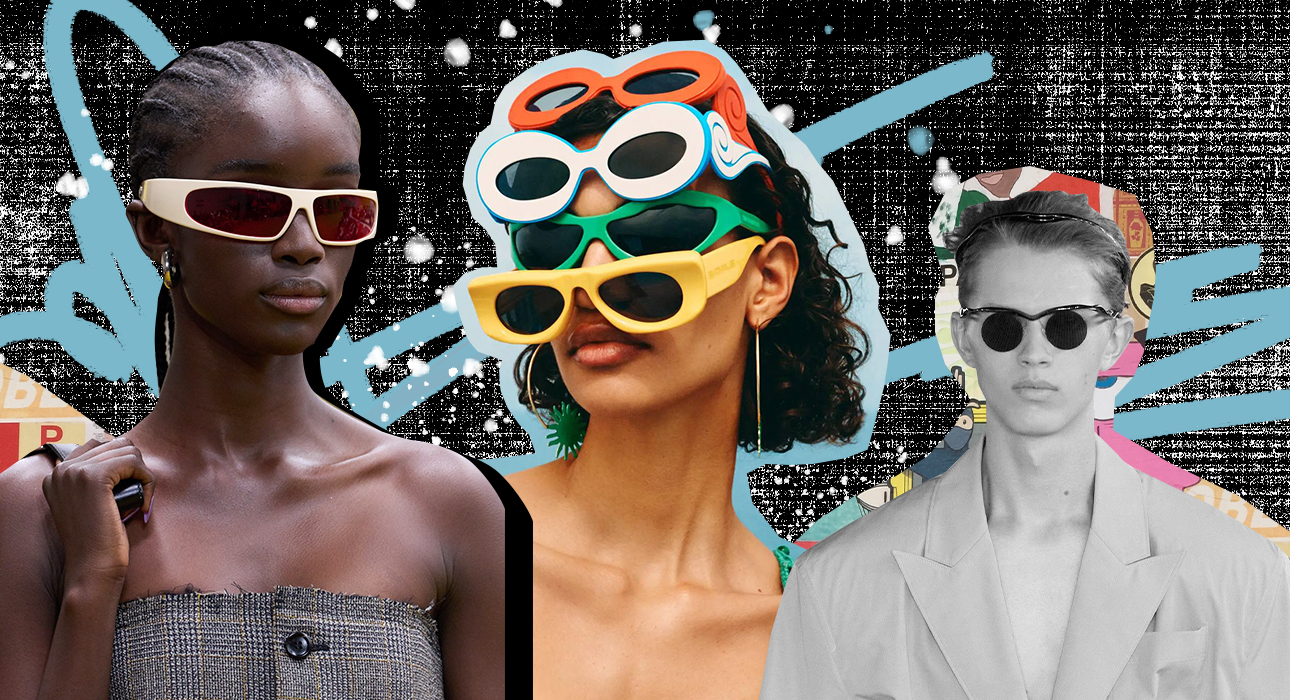It is a true synonym for summer sunglasses, when you want to accessorize not only during the sunny hours of the day, but also at evening events like Timati. And at this point, we can start talking about the trend options of the season, but fortunately or unfortunately, such products are first and foremost a story about health. After all, the main function of sunglasses is to protect from the sun, nothing more. Take a look at the tautology in the previous sentence.
That’s right: it’s not just the skin that is affected by UV radiation. Prolonged exposure to the sun without adequate protection, especially the lens of the eye, is affected and eventually loses its transparency and gradually becomes cloudy. However, the retina also takes a lot – over time, impressive episodes of ultraviolet radiation can contribute to the degeneration of its central region. And, of course, do not forget about the burns.
Finally, the last “horror story”. Glasses with low-quality lenses, bought in the Chinese market with the explosion of a desperate shopaholic, do not protect from the sun and seriously harm the eyes. Such accessories actually only reduce the brightness of UV rays by deceiving our brain. The pupil dilates “thanks” to the darkened lenses and reduced light intensity. And only more harmful rays penetrate the retina. Curtain.
That’s why today, on the Invention Day of Sunglasses, we decided to present a detailed guide on choosing the right accessories. Further, in three sections – with the classification of the functions of protective filter categories, lens materials and even glass colors. And yes: wearing rose-colored glasses, both figuratively and literally, is not the best idea.
Part 1. Protective filters
-
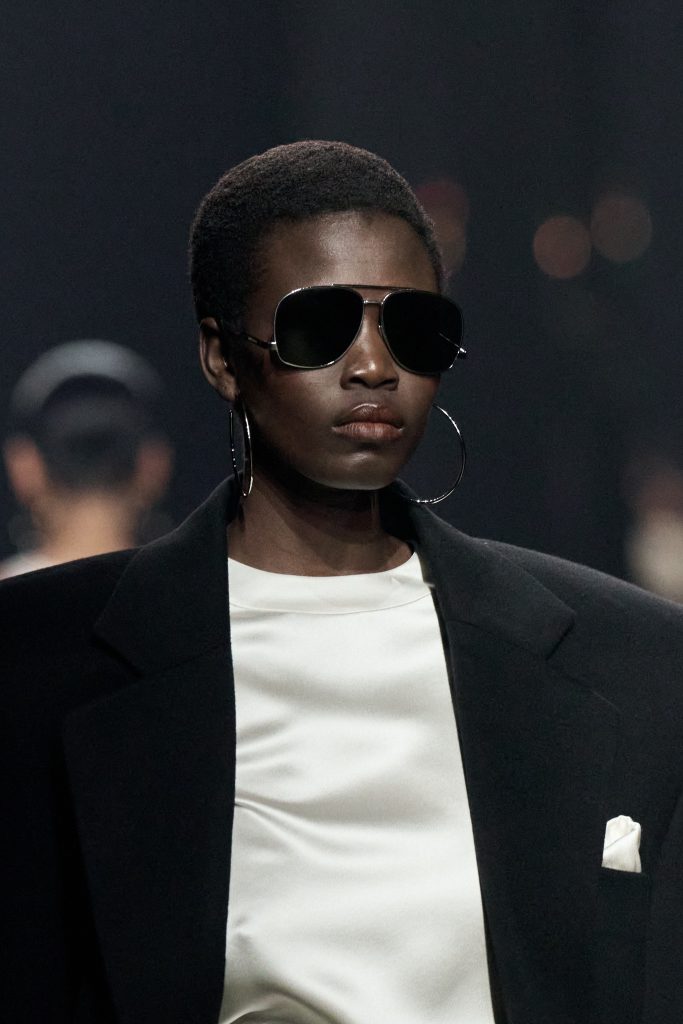
Saint Laurent FW23 -
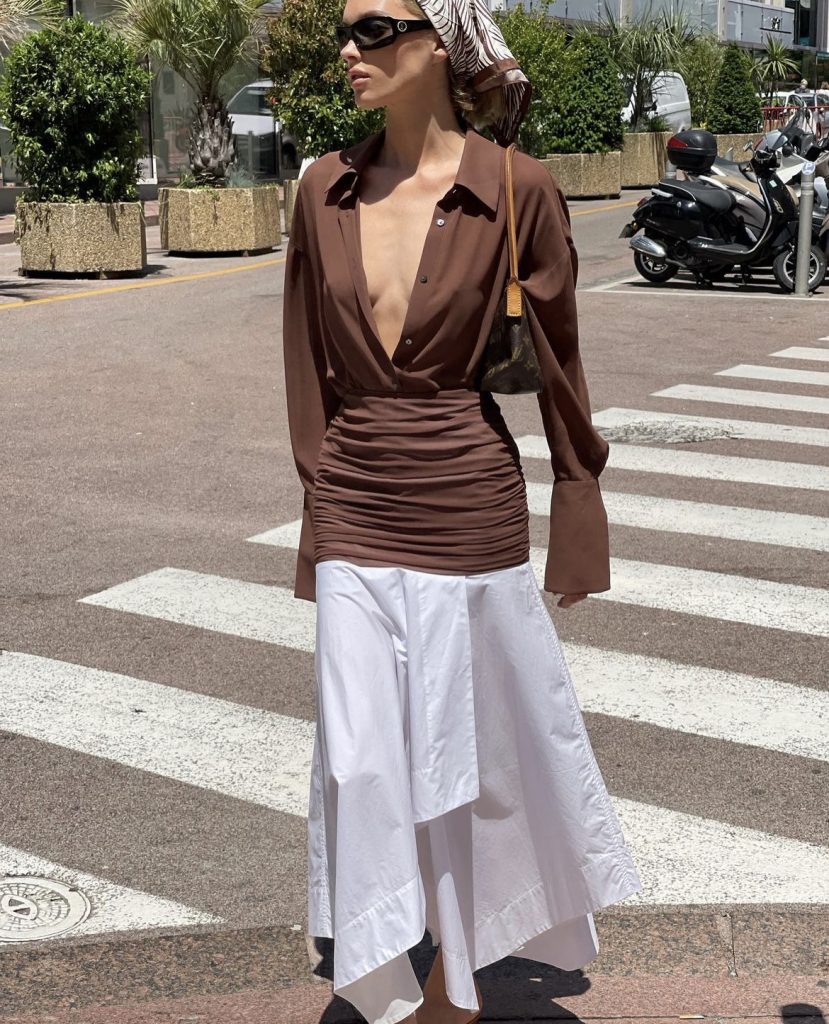
Elsa Hosk. Photo: social networks -
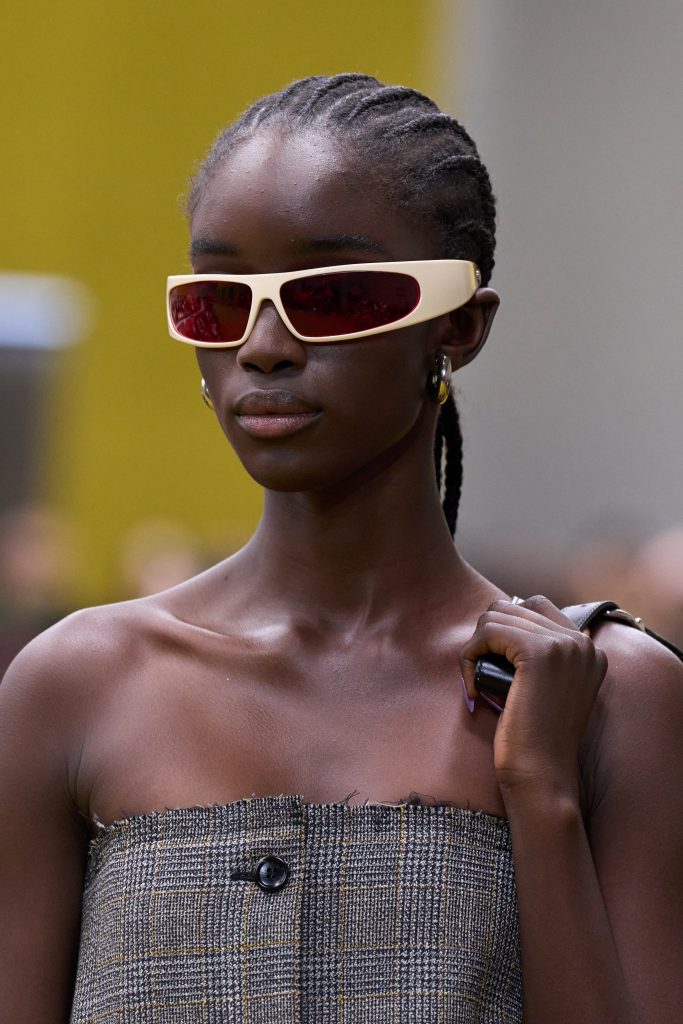
Gucci FW23
Of course, the most ideal option is accessories that block the sun’s rays 100%. Such indicators provide protection in UV400, a code mark placed on the temples. On the contrary, the minimum allowable value according to GOST R 51831-2001 is UV380. The second important factor when choosing valuable accessories is the glass light-permeable filter. In most cases, the latter is also indicated on the stems or certificates of the glasses. Glass light transmission categories are as follows:
Category 0 – transmit 100% to 80% of the light
Goggles with clear lenses and accessories for night riding for minimal protection with a very weak filter
Category 1 – transmit 80% to 43% of light
Goggles with light lenses for mid-latitudes with weak or medium filters, for wearing in cloudy weather or weak sun
Category 2 – transmits 43% to 18% of light
Glasses with tinted lenses for Central European latitudes with a dark universal filter – for wearing during periods of variable cloudiness, as well as when driving
Category 3 – transmits 18% to 8% of light
For Southern Europe, the tropics, the subtropics with very dark filters – simply, glasses for holidays and hot summers
Category 4 – transmits 8% to 3% of light
For deserts and ski resorts with an extremely dark filter, goggles against bright, blinding sunlight that are not suitable for driving as it will be difficult to distinguish the colors of the traffic lights in them
Part 2 Lens Materials
-
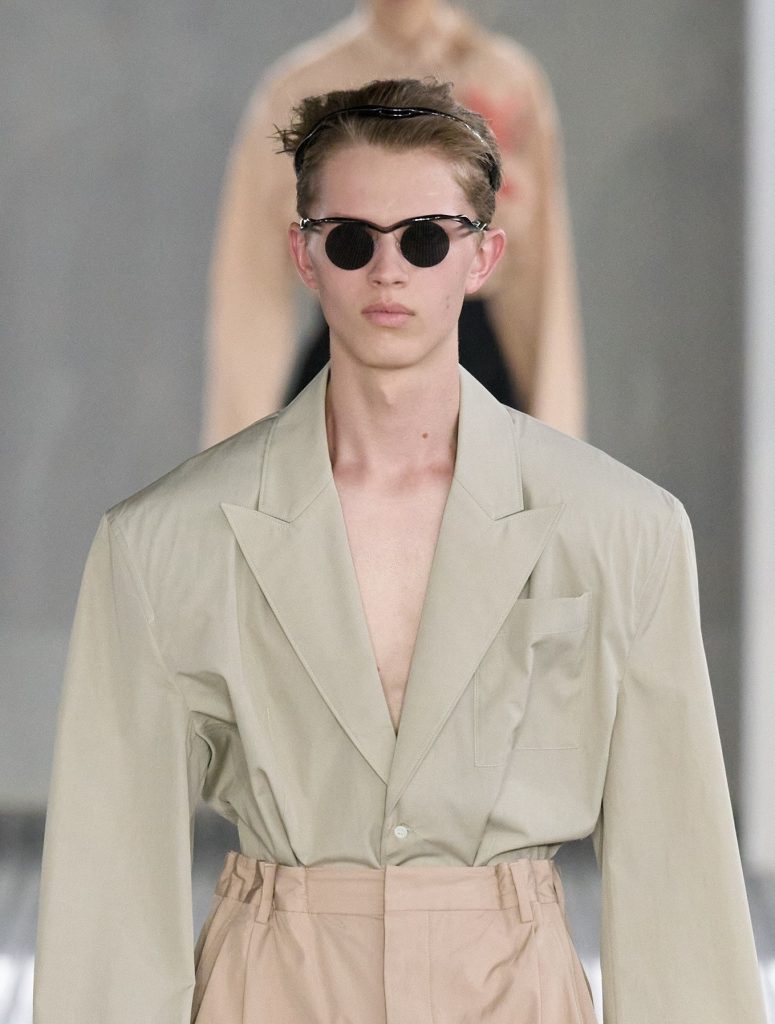
Prada SS24 -

Taylor Russell on the Loewe SS23 campaign -

Emily Sindlev. Photo: social networks
There are two main types of sunglasses materials – mineral (glass) and organic (polymer). In the first case, the lenses are more protected from scratches, but here UV radiation is selectively blocked, so to speak. In addition, nowadays, it is not an easy task to find glasses with glass lenses. Manufacturers of accessories in this class are increasingly abandoning mineral materials – after all, the high cost of production and raw materials obliges.
Polymer lenses, on the other hand, are much lighter in weight and therefore less traumatic – the chance of glass breakage is reduced to an absolute minimum. In addition, organic options have the best degree of protection from the sun, namely UVA rays that easily penetrate clouds, glasses and clothing, and UVB, with 5% of its waves reaching the Earth. 100% UV protection is provided with glasses made of materials such as polycarbonate, trivex, high refractive polymer and CR-39.
And as they say, there is not a single shade of color. Staying at the water’s edge, driving or doing outdoor sports always comes with optical interference caused by light reflections from horizontal surfaces, thus reducing vision. Polarized glasses were invented for such situations. A special film on such accessories reflects the sun’s rays, and the picture passing through the lenses instantly becomes clear.
Chapter 3 Functions of Glass Colors
-

Mango and Simon Miller collaboration -

Spank the glasses, Medea. Photo: social networks -
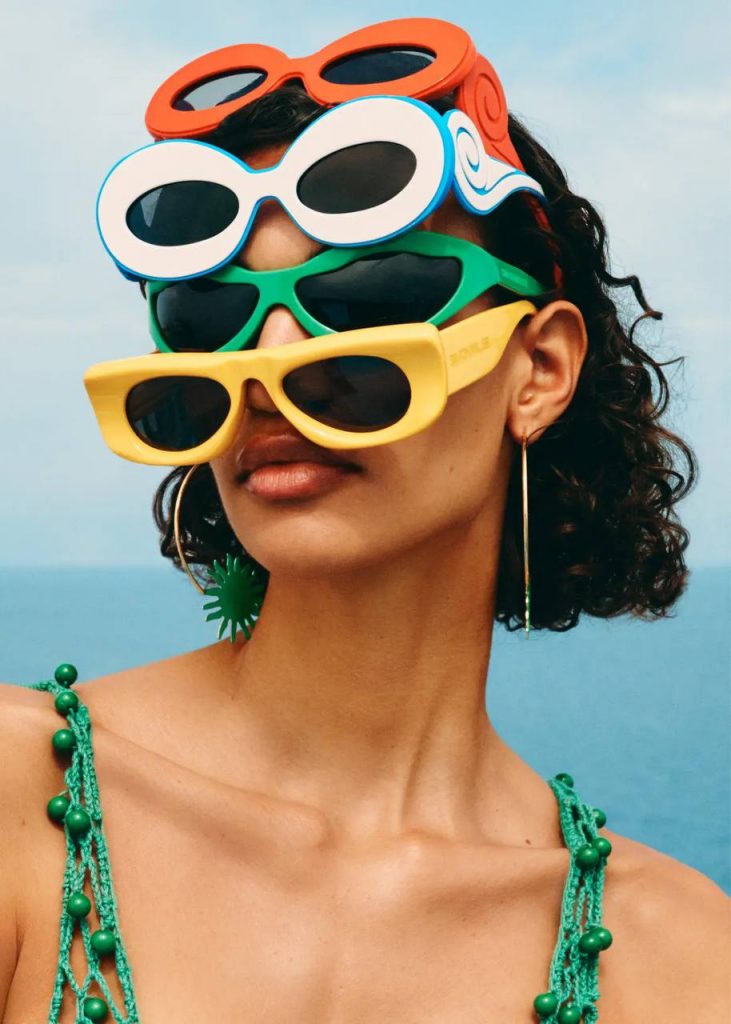
Mango and Simon Miller collaboration
And yet no – a few words about trends. Glasses with colored lenses will rule the ball this season. And everything would be bright and beautiful, but each shade has its own advantages and disadvantages. And dark glass shades – from black to brown – are not a guarantee of protection. Here it all depends more on the individual preferences of the “carrier”. Almost.
Gray options provide the most natural color reproduction. Green, brown and yellow lenses with explosion increase the contrast of vision. Moreover, the second option additionally relieves eye strain, and the third increases the depth of perception.
However, a fly in the ointment. Yellow accessories combined with blue-blue and pink are not the most reliable candidates. Such glasses in principle do not reflect the sun’s rays, so there can be no talk of UV protection. In this case, it is better to really follow Timati’s excellent example and wear glasses with similar glasses only in the evening and at night. Well, or in cloudy weather as a component of the image, something from which the outfit cannot be separated. We swam the other day, we know.
Source: People Talk
I’m Roger Gritton, and I’ve been writing for the The Fashion Vibes for over 5 years now. My specialty is beauty news; I’m passionate about covering the latest trends, products, and innovations in the industry. In my time there, I’ve become known as an authority on all things beauty-related.
I love discovering new experts to interview, researching up-and-coming ingredients and techniques that are making their way onto our beauty shelves and highlighting people who are making a difference in the world of cosmetics. My work has appeared not only on The Fashion Vibes, but also several other publications including the New York Times Magazine, Allure Magazine and Refinery29.

